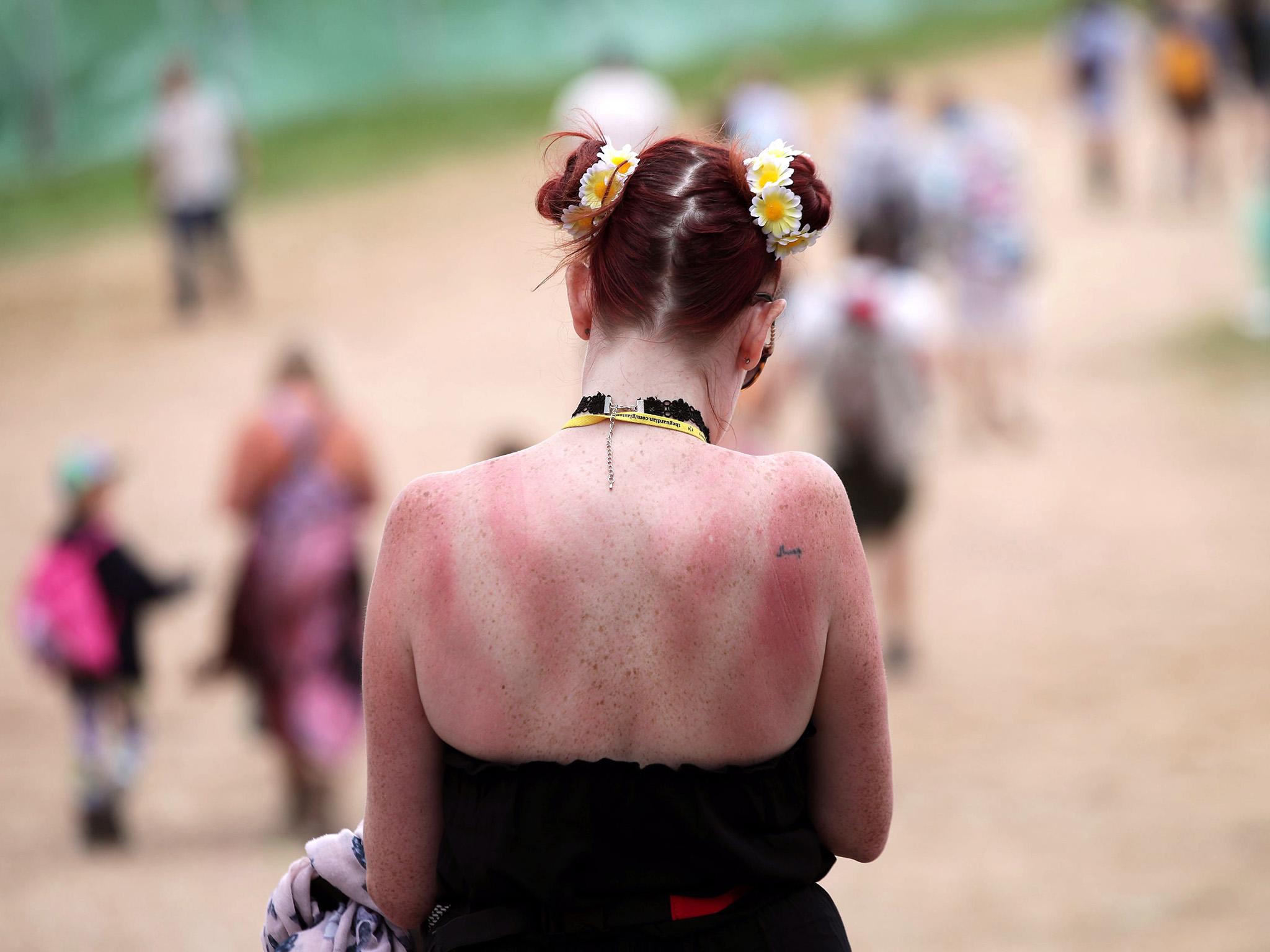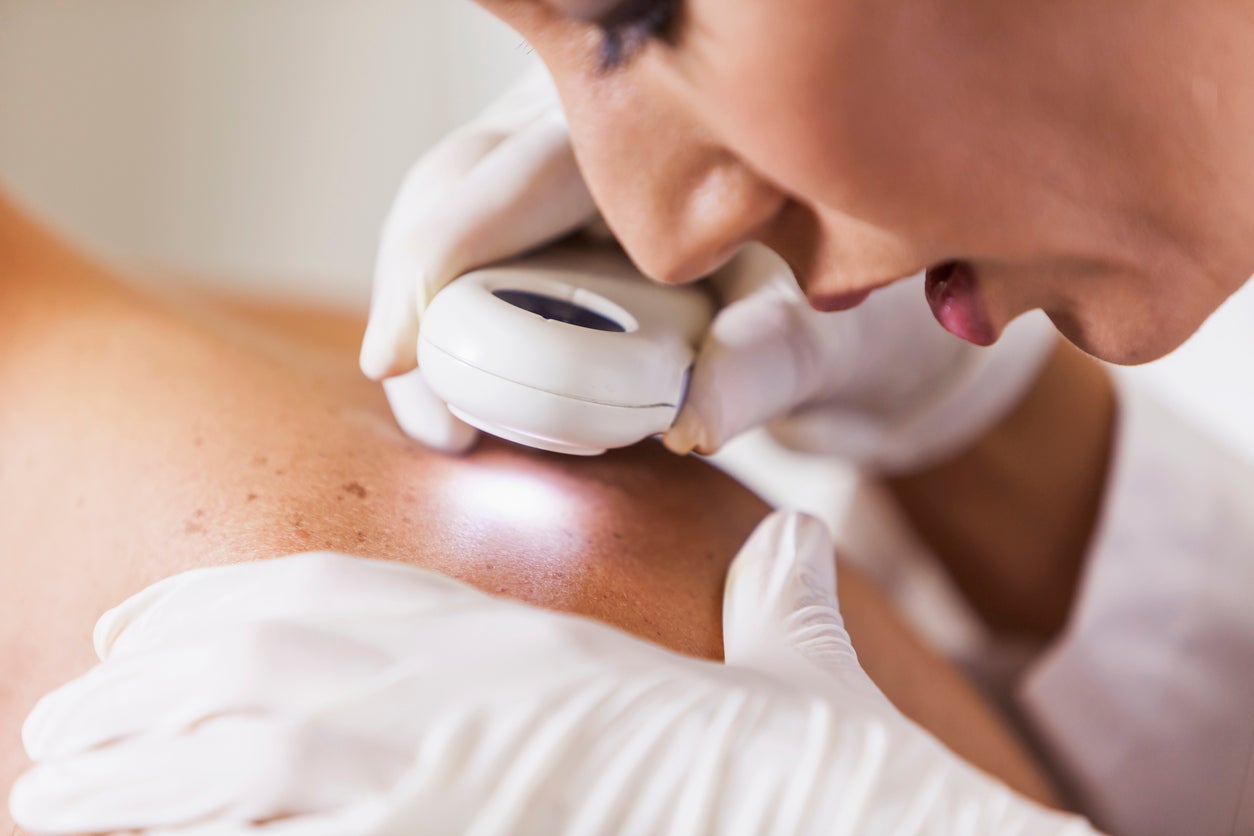How to stay safe in the sun this summer
Every year in the UK, more than 15,000 cases of melanoma skin cancer are reported – most are preventable. There are deadly tanning myths, confusion over sunscreen, poor awareness of warning signs and treatment. What is melanoma and how best do we protect ourselves from it?

Your support helps us to tell the story
From reproductive rights to climate change to Big Tech, The Independent is on the ground when the story is developing. Whether it's investigating the financials of Elon Musk's pro-Trump PAC or producing our latest documentary, 'The A Word', which shines a light on the American women fighting for reproductive rights, we know how important it is to parse out the facts from the messaging.
At such a critical moment in US history, we need reporters on the ground. Your donation allows us to keep sending journalists to speak to both sides of the story.
The Independent is trusted by Americans across the entire political spectrum. And unlike many other quality news outlets, we choose not to lock Americans out of our reporting and analysis with paywalls. We believe quality journalism should be available to everyone, paid for by those who can afford it.
Your support makes all the difference.The UK has enjoyed a less than glorious summer this year. But you can bet that the next sunny day we get, the barbecues will be sizzling, the parks and beaches full. The children have broken up for summer and many of us are packing for our holidays in the sun. It is a wonderful time of the year but our sun-seeking habits are storing up problems for our skin in the future. No one anticipates that they will be the one to develop skin cancer, yet every day in the UK 42 new cases of melanoma are diagnosed according to Cancer Research UK. This equates to 15,419 cases per year and the number of cases of melanoma in the UK have more than doubled since the early 1990s. Eighty-six per cent of these cases are deemed preventable (Cancer Research UK) and the rates of melanoma in the UK are predicted to rise further by 7 per cent by 2035.
What is melanoma?
Melanoma is a type of skin cancer derived from cells called melanocytes. These cells create pigment which helps to protect your skin from the sun’s rays. They are found at the junction between the two layers of the skin (the epidermis and dermis). Damage caused by the UV rays in sunlight and other insults (for example radiotherapy), damage the DNA in these cells and can affect the pathways that control cell growth. When this happens, the melanocytes multiply in number, abnormal cells are not destroyed and the melanocyte numbers grow uncontrolled. The abnormal cells then grow down into the dermis (the second layer of the skin) and a melanoma develops. Melanoma is the 5th most common cancer in the UK. Fortunately, the survival rate is high at 90 per cent. This is partly due to the fact that as the growth is occurring on the skin it is often picked up early.
How does the UK compare with the rest of the world?
The UK has one of the highest incidences of melanoma in Europe (7th out of 40 countries in 2012). The highest rates are found in Switzerland, Norway, Sweden and the Netherlands, the lowest melanoma rates occur in Greece, Moldova, Bosnia and Herzegovina, and Albania according to World Health Organisation (WHO) figures.
Worldwide, the highest melanoma rates are in the Antipodean regions. Incidence of melanoma appears to be rising in most of the higher risk populations in the world except in Australia. Australia has topped the table for the highest rates of melanoma for decades however while incidence rates continue to rise in countries like the UK, Sweden, Norway and the caucasian population in the US, in Australia they have managed to buck the trend and their melanoma rates have been falling since 2005. This reduction in melanoma rate has been so successful that Australia no longer has the highest incidence of the disease; it now lies behind New Zealand for melanoma incidence rates.
This success has been attributed to the huge public health “Sun Smart” campaigns that the Australian government put in place in the 1980s onwards. It takes decades for the effects of sun damage to become apparent which is why it has taken so long to reap the benefits of this intervention but the campaign has ensured that schools, workplaces and childcare settings in Australia have all taken measures to protect against UV radiation and safe sun measures are now embedded in normal life.
How to be safe in the sun
Use of sunscreen is important for sun protection. Sunscreens protect against UVB rays which don’t penetrate deeply in the skin and often causing burning, and UVA rays that penetrate deeper in the skin and can result in tan formation. Both types of rays damage DNA in the skin and can increase your risk of developing skin cancer. These rays also age the skin resulting in deeper wrinkling, darker spots and red scaly marks. The number on the sunscreen bottle refers to the UVB protection of the sunscreen. I advise using factor 30 in the UK and 50 in hotter climates. It is important to also check the UVA rating of your sunscreen. This is found as a star rating with five stars providing the best protection. Application of sunscreen is key. Most of us do not apply the product thickly enough and therefore do not get the full benefit of the sunscreen. The cancer council of Australia recommends at least a teaspoon for each limb or the back, and half a teaspoon for face neck and ears. When applied correctly sunscreen usually result in white streaks on the skin.

Unfortunately, the cost of sunscreen is high and bottles are relatively small so even when sunscreen is used, not enough product is applied. I travelled to New Zealand and Australia several years ago and I was impressed with the amount of large bottles of cheap high factor sunscreen that were widely available. I would love to see such products more widely available in the UK. This would help schools and childcare settings protect our children and would encourage us to use enough sunscreen product.
Keeping children safe
Children’s skin is thinner and more sensitive than adult skin. High childhood sun exposure can increase your lifetime risk of developing melanoma. The advice from the Cancer Council of Australia is to keep babies up to the age of 12 months out of the sun as much as possible. Other measures to help small children include planning your outdoor daily activities around the middle of the day when the UV levels are highest. Covering the skin with clothing is more effective than cream and use of a sun-hat is very important to protect delicate scalps and faces. Seeking shade in play areas will also help. Finally, applying a high factor UVA and UVB sunscreen to exposed sites and reapplying regularly is important.
Myths about tanning
Unfortunately, there is still a perception that a tan looks healthy. The reality is that a tan indicates that you have had enough sun exposure to cause DNA damage in your skin. This will lead to deep wrinkling, irregular colouration of your skin with darker patches and freckling, red scaly areas and increasing your future risk of skin cancer. A tan does not protect much against the sun’s rays either, usually around SPF3 depending on your skin type and it doesn't protect against damage to the skin. Fake tans are a good alternative if you want a darker skin tone however these products do not protect your skin from the sun either so it is important to continue to practice safe sun measures.
Solariums and sun bed use
Use of these machines to generate a tan have increased dramatically in the last 3 decades especially among the younger generations. Because of the damaging UVA and UVB rays emitted from these machines, they have been classified as carcinogenic (causing cancer) by the International Agency for Research on Cancer. Use of sunbeds is estimated to be responsible for over 450 000 non-melanoma skin cancer cases and more than 10 000 melanomas in the United States, Europe and Australia according to the WHO publication on artificial tanning devices. The Scientific Committee on Health, Environmental and Emerging Risks (Scheer) of the European Commission have advised that there is no safe limit for exposure to UV radiation from sunbeds because of the strong evidence linking skin cancer to sunbed use.
Policy options recommended by WHO include targeted educational, strategies, regulation of the industry and banning of solariums. In 2009 Brazil became the first country in the world to ban use of sunbeds and in 2016 Australia took the decision to ban all commercial solariums. I would like to see our government taking a stronger line on these commercial solariums, ideally following our Australian colleagues example and banning all devices not used for medical purposes.
But what about Vitamin D?
Vitamin D is essential for bone health. It is found in food particularly in oily fish, and fortified foods such as cereals, however it is difficult to gain enough vitamin D from your diet. Vitamin D is also made by the body in a pathway that requires sunlight. So we do need a balance between the amount of sunshine required to make vitamin D and the amount that will increase our risk of skin ageing and skin cancer. In the UK, we only get the required UVB rays from the end of March/early April till October time. The current advice is that casual exposure of a few minutes, a few times a week is sufficient for most people to maintain healthy levels of vitamin D. The time required will vary from person to person as there are many influencing factors including your natural skin tone. Fairer skin types will need less than darker skin tones. All experts agree that you do not need to burn or tan to achieve the required levels of vitamin D and that it is not recommended to use sunbeds to increase your vitamin D levels because of the risk of skin cancer associated with this practice. For those who are at a higher risk of vitamin D deficiency, the young, those with darker skin tones and those who avoid sun exposure, 400 iu of Vitamin D can be taken daily, especially in the autumn and winter when natural vitamin D production is low.
So it is possible to enjoy the summer, and keep your vitamin D levels healthy without risking the future health of your skin. I would like the government to learn the lessons from the Australian model and to emphasise the importance of safety in the sun, provide cheaper sunscreen and to ban commercial sun tan beds and solariums but we can all start today to take measures that protect ourselves and those we care about to enjoy the summer safely.
Dr Claudia DeGiovanni is a consultant dermatologist working at Brighton and Sussex University Hospitals NHS Trust and the Nuffield Health Brighton; drdegiovanni.co.uk; follow @drcdegiovanni
Join our commenting forum
Join thought-provoking conversations, follow other Independent readers and see their replies
Comments